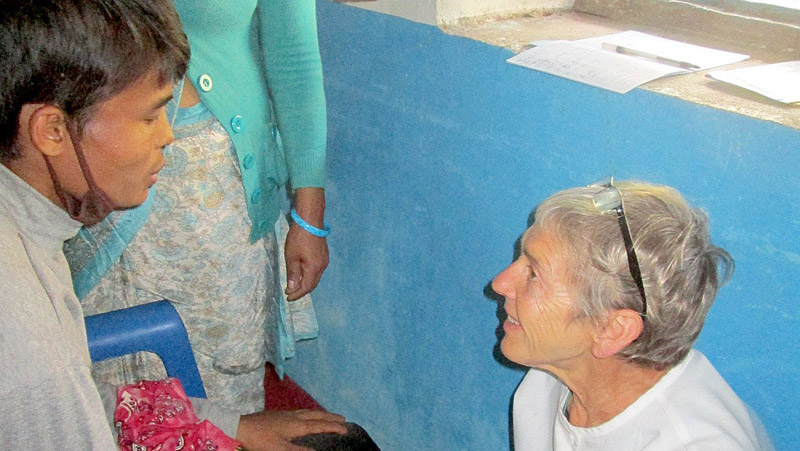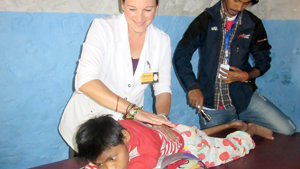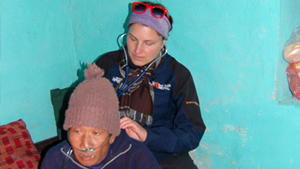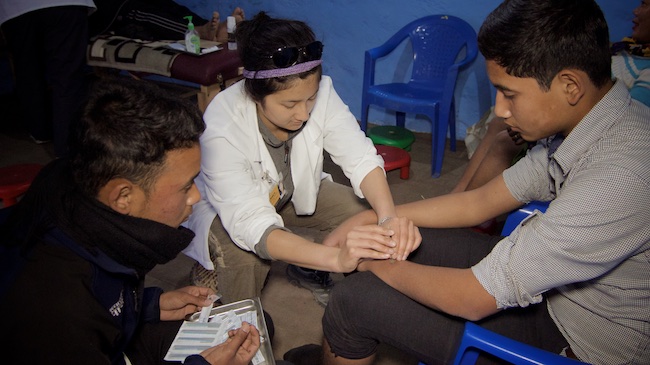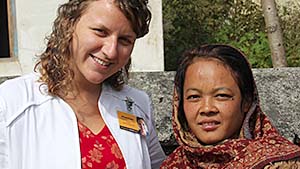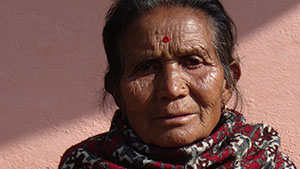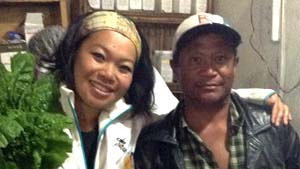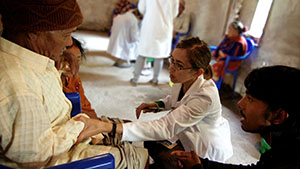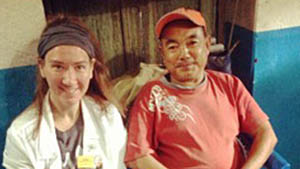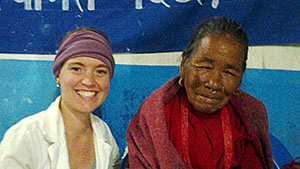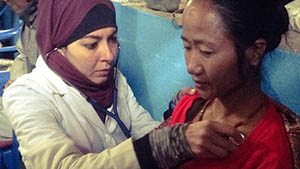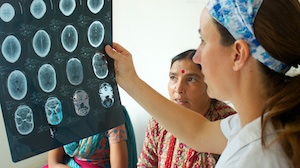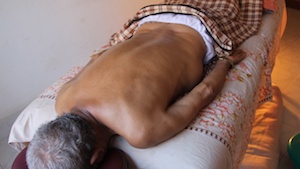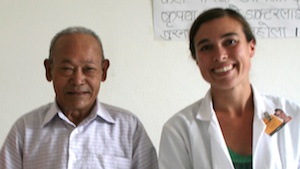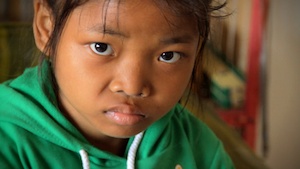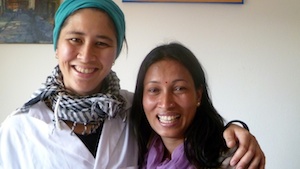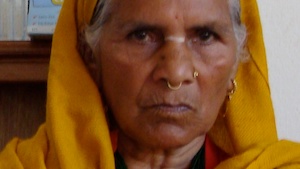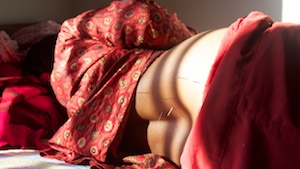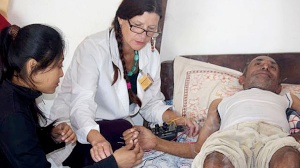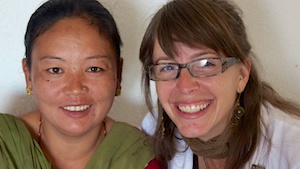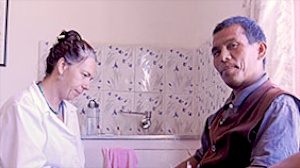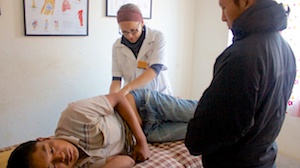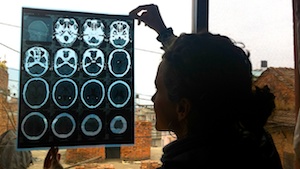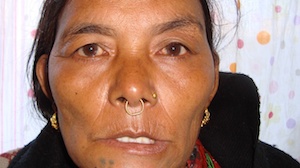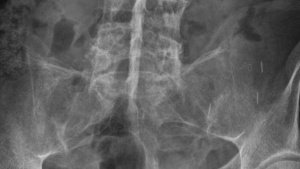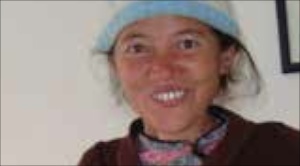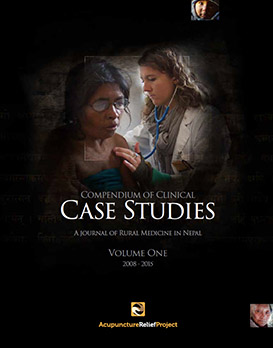Felicity Woebkenberg MAcOM LAc
October 2011
Overview
31-year-old male presents with chronic abdominal pain. The patient has suffered from abdominal pain for the past 11 years, but has had a worsening of symptoms in the past year. Case analysis after 11 visits over 2 months.
SUBJECTIVE
Patient presents with pain in the epigastric, umbilical, hypogastric, lumbar and iliac regions. The patient describes the pain as burning and sharp in nature, worse after eating, and migratory in nature. Symptoms have occurred gradually over time (starting 11 years ago), but have increased in severity over the past year. The patient had an endoscopy 5 months ago. The results were negative. The patient states that he has trouble maintaining his weight (most likely due to malabsorption), and in the past has had diarrhea stools as often as 6-7 times per day. Currently, this patient is having 1-2 stools per day, which at times are small in amount and often feel as if they are incomplete (and also described as “goat- like stools”). He denies blood or a tarry appearance to the stool, but states that at times there is some visible mucous. He has abdominal cramping and sensations of nausea without vomiting, prior to bowel movements, that are relieved after defecation. The patient also states that he gets frontal and temporal headaches prior to bowel movements with relief after defecation. The patient describes a bitter taste in the mouth after meals. In the morning, the patient awakes to belching, foul breath, liquid in the mouth and a bitter taste. The patient describes the liquid as watery, slippery and light green to black in color. The patient has also described intermittent low-pitched ear ringing, as well as intermittent itching to the skin with a mild redness and rash. The patient states that all of his symptoms are worse with spicy and greasy foods. The patient feels warm overall. His primary emotion is frustration and anger. He has difficulty resolving conflicts with others and avoids challenging situations. The patient denies any significantly stressful life events during the time that his symptoms progressed over the past year. He has high-pitched tinnitus in both ears. The patient has a family history of an aunt who also had a similar condition with similar symptoms who died at the age of 40.
Typical diet: Dhal and rice, potato’s, minimal spicy foods, no alcohol
OBJECTIVE
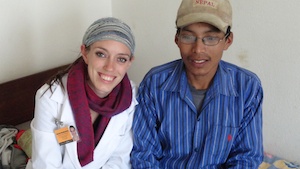 The patient appears thin and somewhat malnourished and deficient. His cognition appears to be intact and his speech is age appropriate. He is visibly disturbed by his illness and there is a sense of desperation in his search for a solution. The sclera of his eyes have a red tint and he occasionally has watery and itchy eyes. He has a stye on the superior, left eyelid.
The patient appears thin and somewhat malnourished and deficient. His cognition appears to be intact and his speech is age appropriate. He is visibly disturbed by his illness and there is a sense of desperation in his search for a solution. The sclera of his eyes have a red tint and he occasionally has watery and itchy eyes. He has a stye on the superior, left eyelid.
He is extremely reactive and tender to palpation particularly in the left upper and lower quadrants, as well as within the hypochondriac region on the right side just inferior to the 10th rib. The patient winces with pain upon palpation and needle insertion. Upon auscultation, hyperactive bowel tones can be heard in all 4 quadrants. The Liver and Gallbladder appear to be inflamed and exceptionally tender upon examination. The patient is referred to the health post for lab testing to rule out possible cholelithiasis and hepatitis. Labs drawn include bilirubin total and direct, AST, ALT and amylase. All results within normal range.
Pulse: Wiry/slippery and bounding superficially, deficient at the base
Tongue: Red, no coat (peeling particularly on the left side of the tongue), with red prickles to sides and tip.
ASSESSMENT
DX: Possible chronic parasitic infection, IBS, malabsorption syndrome, H. Pylori-Gastric Ulcer or Crohn’s disease
TCM DX: Acute: Damp-heat in the LR/GB overacting on deficient SP/ ST (with possible deficiency heat) Constitution: Spleen Qi deficiency leading to the accumulation of damp.
PROGNOSIS: Due to the length of time that this patient has had this condition, it is likely that this will take a significant amount of time for the gastrointestinal tract to heal.
INITIAL PLAN
Treat with acupuncture 2 times per week for 10 treatments and then reassess. Focus on points to tonify the Spleen, move stagnation, and eliminate dampness in the middle jiao. Internal herbal treatments include: Huang Lian Jie Du Tang, Gui Zhi Gan Jiang Tang, Stomach Formula, Er Chen Wan, Zi Sheng Wan and Intestinal Fungus Formula. Warm needle moxa on ST36. Dietary considerations, such as avoiding overly spicy foods, greasy foods and uncooked meat are discussed.
Typical treatment: ST36 (tonify qi and blood), SP6 (tonify qi and blood), ST25 (tonify intestinal function), SP15 (tonify intestinal function), CV6 (tonify SP/ST), CV3 (reduce damp-heat), CV12 (tonify yin organs and ST), LI 10 (tonify), PC6 (tonify SP/ST and reduce nausea), LR13 (reduce and harmonize the SP and LR), LR5 (reduce dampness and heat in the lower jiao), LR3->(angled towards)LR2 (reduce excess fire in the LR), LR14 (reduce excess in the Liver), GB24 (reduce excess in the Liver).
OUTCOME
After 11 treatments, the patient failed to experience significant improvement. Further diagnostic testing (including eosinophils, Hgb, Hct, stool evaluation) to evaluate for a possible chronic parasitic infection or gastrointestinal bleeding was ordered. All test results were negative. The patient was asked to bring in a sample of the black/greenish liquid that he has in his mouth in the morning in a sealed container for examination and objective data.
The patient progressed from 6-7 bowel movements per day to 1-2 per day. He became much less needle sensitive as the treatments progressed.
CONCLUSION AND REVISED PLAN
Further testing, consistency and continuity of care is necessary to properly evaluate this patient, create an appropriate treatment plan and a healing and trusting relationship. Test with herbs for at least 2-3 weeks, in addition to acupuncture 2-3 times per week for another 10 treatments before reassessing. Continue to provide encouragement and consider possible underlying emotions that may exacerbate the patient’s symptoms (when diagnostic testing has ruled out other possible causes).
Discontinue Intestinal Fungus Formula.
Initiate Gallbladder inflammation test: ¼ cup of olive oil by mouth; Monitor for changes in symptoms for the next 24 hours. If the test is positive, refer for ultrasound of Gallbladder.
Consider Jia Wei Xiao Yao Wan 10 pills BID for 2-3 weeks for both excess and deficiency symptomology. Emphasize importance of consistent herbal plan to measure herbal efficacy.













